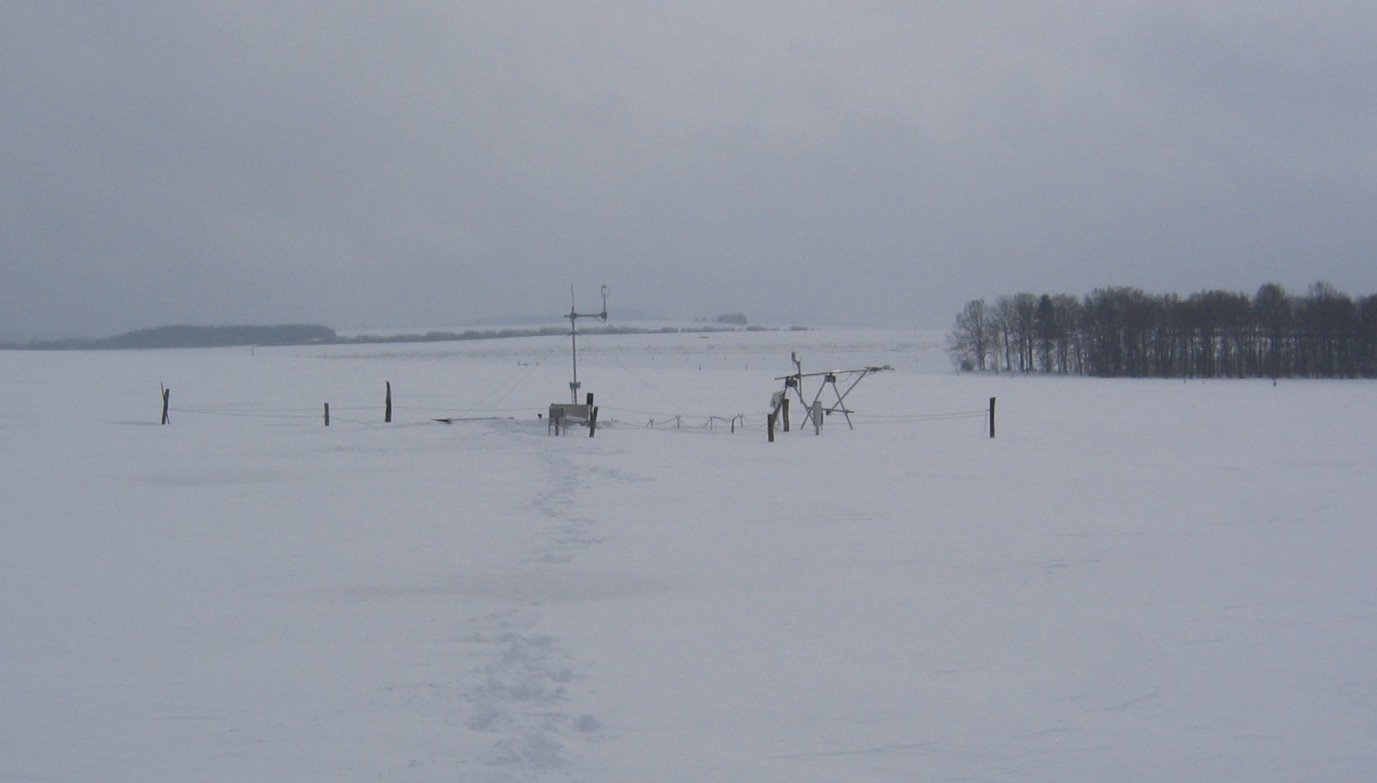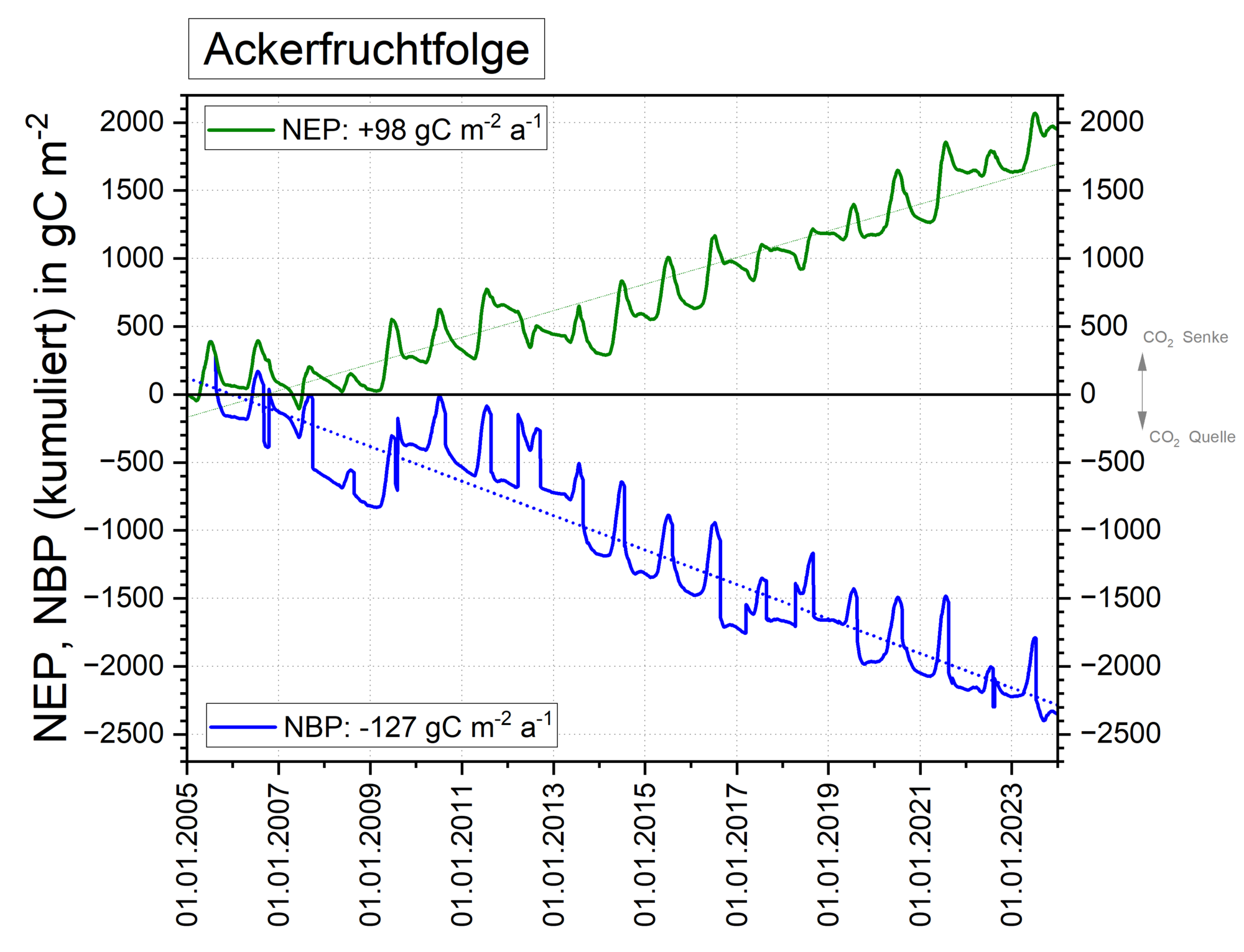Klingenberg
Currently the TU Dresden (Chair of Meteorology) operates 6 monitoring sites to measure energy, water and greenhouse gas exchanges of different land uses including 4 sites (Tharandt, Grillenburg, Klingenberg, Hetzdorf) within the framework of the ICOS-D ecosystem component (TU Dresden or Tharandt cluster).
The cropland site Klingenberg (50°53’34”N, 13°31’21”E; 478 m a.s.l.) is located in the mountain foreland of the Erzgebirge. EC measurements began in 2004. The ecosystem is an intensively managed farmland (5-year crop rotation including rapeseed, winter wheat, maize, spring barley and winter barley). The soil carbon stock (0-60 cm depth) is 97 tC ha-1 (2008), the C/N ratio is 13.3 (soil) and 7.5 – 42.5 (plants), respectively.

The site is equipped with an ultrasonic anemometer GILL R3-50 (Gill Instruments, Lymington, UK) and a closed-path gas analyzer LI-7000 (LiCor Inc., Lincoln, NE, USA), respectively, accompanied by measurements of radiation components, air temperature and humidity, precipitation as well as soil and biomass observations. Management information of the Colmnitzer Agrargenossenschaft are available.
Since 2005 the mean net CO2 sink (net ecosystem productivity) is 50 gC m-2 a-1. Including carbon export (harvests) and carbon imports (organic fertilisations) the ecosystem switches to a CO2 source of 150 gC m-2 a-1 (net biome productivity). The ratio of net ecosystem productivity and gross primary production is 0.04. The (corrected) annual evapotranspiration rate is between 460 mm (2009) and 630 mm (2014) whereas the (corrected) precipitation is from 720 mm a-1 (2006) to 1190 mm a-1 (2013). So, the mean evaporative fraction is 56% of precipitation and 83% of available energy, respectively.

PI: Prof. Dr. Christian Bernhofer, TU Dresden, Chair of Meteorology
Site manager: Dr. Thomas Grünwald, TU Dresden, Chair of Meteorology